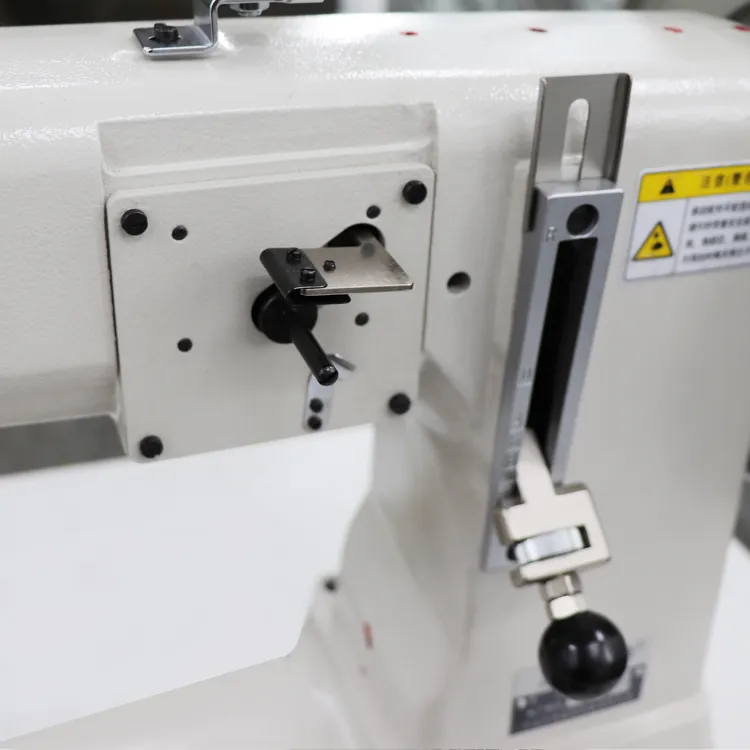what does a overlocker sewing machine do
What Does an Overlocker Sewing Machine Do?
An overlocker sewing machine, also known as a serger or an overedge machine, is a specialized sewing device designed to finish the edges of fabric in a clean and professional manner. Unlike a traditional sewing machine, which typically uses a single needle to create stitches, an overlocker employs multiple threads and needles to stitch, trim, and overcast the fabric edges simultaneously. This unique feature allows for stronger seams and helps prevent fraying, making overlockers a crucial tool in both home sewing and professional garment construction.
Key Functions of an Overlocker
1. Edge Finishing One of the primary functions of an overlocker is to finish the raw edges of fabric. When fabric is cut, the edges can unravel or fray over time. An overlocker uses a looped stitch to wrap around the edges of the fabric, securing them and preventing any unraveling. This not only strengthens the edge but also gives it a neat appearance, which is particularly important for garments that will be worn or washed frequently.
2. Seaming Overlockers are also adept at creating seams. Many overlocker machines come with multiple stitching options, such as a 4-thread overlock for strong seams or a 3-thread option for lighter fabric. The ability to sew seams with an overlocker is advantageous because it produces a flat and flexible seam, which maintains the stretchability of the fabric—ideal for knit and stretchy materials.
3. Trimming As the overlocker stitches the fabric edges, it simultaneously trims away excess material. This means that there is no need for a separate cutting process, leading to a quicker sewing experience. The integrated blade can easily cut through multiple layers, enabling you to refine finishing and achieve a better fit.
4. Gathering Some advanced overlockers can also gather fabric, making them valuable for creating ruffles or puffed sleeves. This technique is especially useful in fashion sewing where design elements often require gathered sections of fabric.
what does a overlocker sewing machine do

5. Decorative Edging Overlockers can also be used to create decorative edges on fabric, such as rolled hems or lettuce edges. These techniques add a unique touch to garments that set them apart from standard finishes produced by regular sewing machines.
Advantages of Using an Overlocker
The advantages of incorporating an overlocker into your sewing toolkit are numerous. Firstly, the quality of the finish is significantly enhanced when using an overlocker compared to a traditional sewing machine. The finished product looks more professional and is often more durable. This upgraded finish is essential for garments intended for frequent use or made from delicate fabrics.
Secondly, the speed at which overlockers can complete an edge finish is much greater than a standard machine. An overlocker can sew, trim, and finish edges all at once, reducing the time spent on each project and improving overall efficiency. This can be particularly beneficial for those who sew in bulk or run a small clothing business.
Moreover, overlockers provide versatility. The different stitch types and options allow for various sewing techniques, accommodating a wide range of fabric types and project complexities. From sewing clothing to creating home furnishings or crafting, the applications are extensive.
Conclusion
In summary, an overlocker sewing machine is an invaluable tool for anyone interested in sewing, especially those focused on garment making. Its ability to finish edges, create strong seams, trim excess fabric, and even gather materials allows for a high degree of creativity and efficiency. While it may seem like an additional investment compared to a regular sewing machine, the time saved and the professional results produced make it a worthy addition to any sewing enthusiast's workspace. Whether you're a hobbyist or a professional, mastering the use of an overlocker can elevate your sewing projects to a new level, ensuring that your creations not only look great but also stand the test of time.
-
Zigzag Sewing MachineNewsMay.12,2025
-
Single Needle Sewing MachineNewsMay.12,2025
-
Overlock Sewing Machine PriceNewsMay.12,2025
-
Heavy Duty Industrial Sewing MachineNewsMay.12,2025
-
FIBC Sewing MachineNewsMay.12,2025
-
Cylinder Bed Sewing MachineNewsMay.12,2025
-
Revolutionizing Sewing with CNC TechnologyNewsMar.28,2025





























